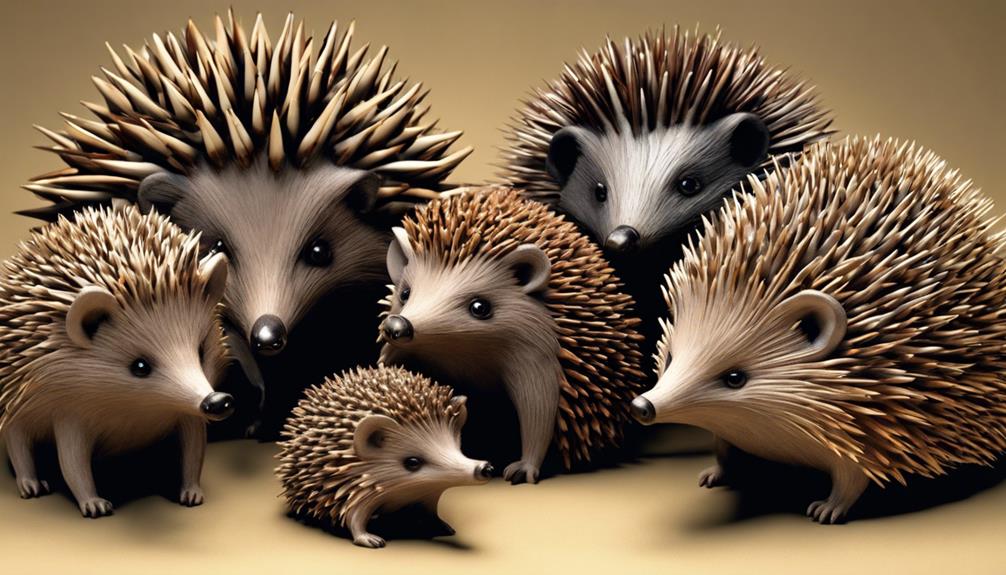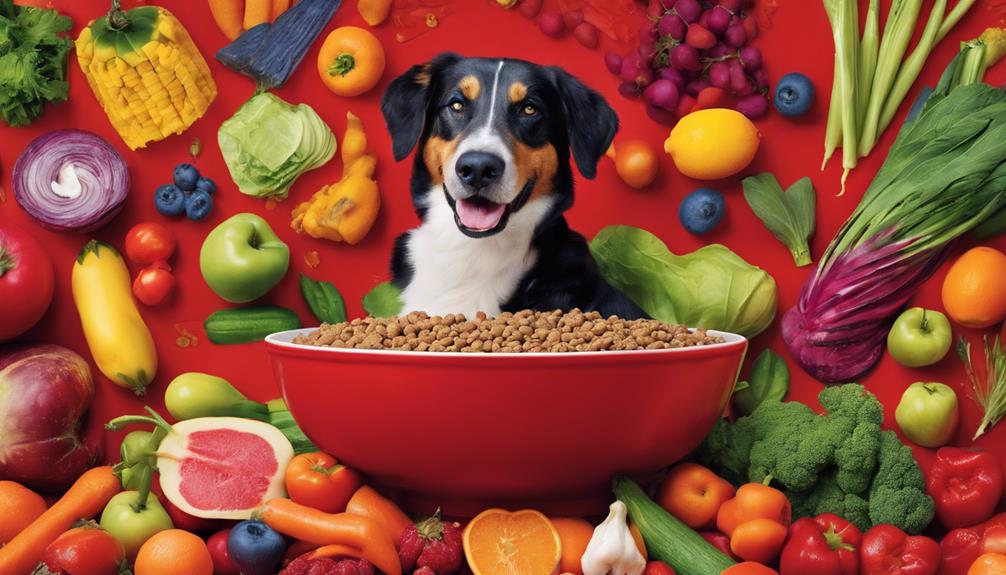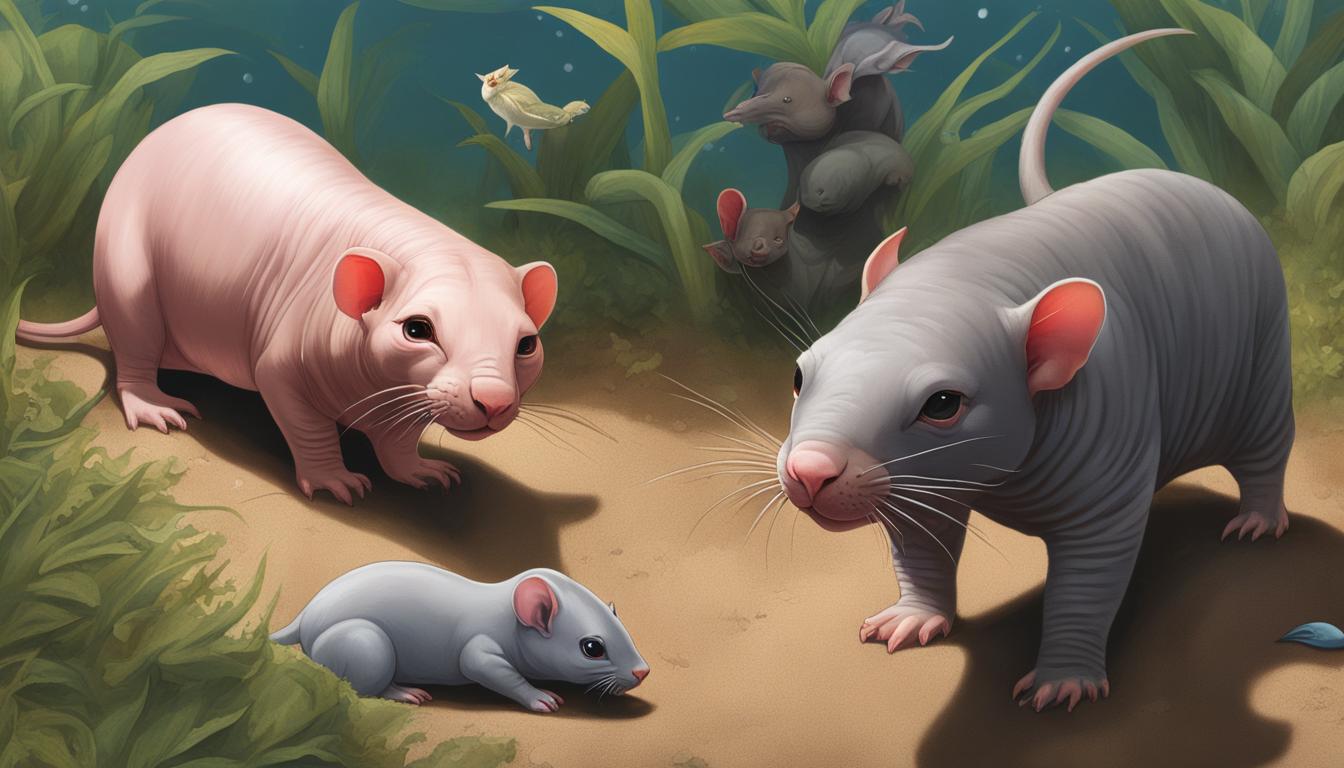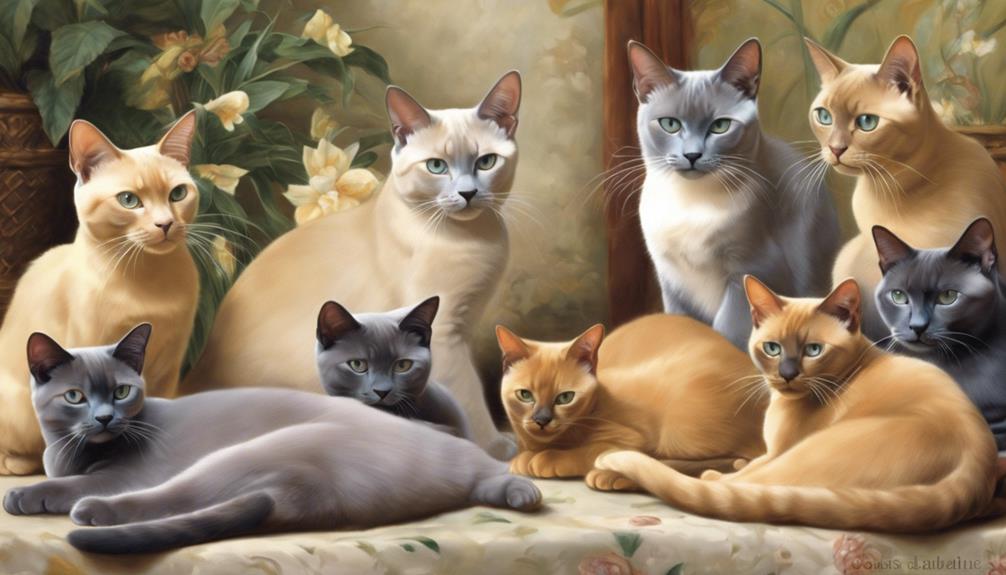Five animals look like hedgehogs. Moonrats resemble hedgehogs but lack spines. Large-Eared Tenrecs from Madagascar have detachable quills for defense. Solenodons from the Caribbean feed on insects with toxic saliva. Echidnas from Australia lay eggs and use a sticky tongue to eat ants. Golden Moles in southern Africa are skilled burrowers. These animals have fascinating adaptations.
Key Takeaways
- Moonrat: Resembles hedgehogs but lacks spines, found in Southeast Asia.
- Large-Eared Tenrec: Covered in detachable quills, native to Madagascar.
- Solenodon: Caribbean species with poor eyesight, feeds on insects using toxic saliva.
- Echidna: Egg-laying monotreme found in Australia, feeds on ants and termites.
- Golden Moles: Skilled burrowers in southern Africa, rely on underground insects for sustenance.
Moonrat: The Asian Hedgehog Lookalike
Resembling hedgehogs in appearance but lacking their characteristic spines, the Moonrat, scientifically known as Echinosorex gymnura, is a small nocturnal mammal found in Southeast Asia. While Moonrats may look like hedgehogs, they're actually more closely related to tenrecs, a unique family of small mammals primarily found in Madagascar. This resemblance is a classic example of convergent evolution, where unrelated species develop similar traits due to adapting to similar environments.
The Moonrat's habitat in Southeast Asia has been facing challenges due to habitat loss, which threatens the survival of this intriguing species. Despite not having spines like their hedgehog counterparts, Moonrats play an essential role in insect control within their ecosystem, showcasing the importance of these small mammals in maintaining the balance of their environment. By understanding the Moonrat's unique adaptations and ecological significance, we gain a deeper appreciation for the diversity of hedgehog-like animals around the world, each with its own specialized role in nature.
Large-Eared Tenrec: The Spiky Resemblance
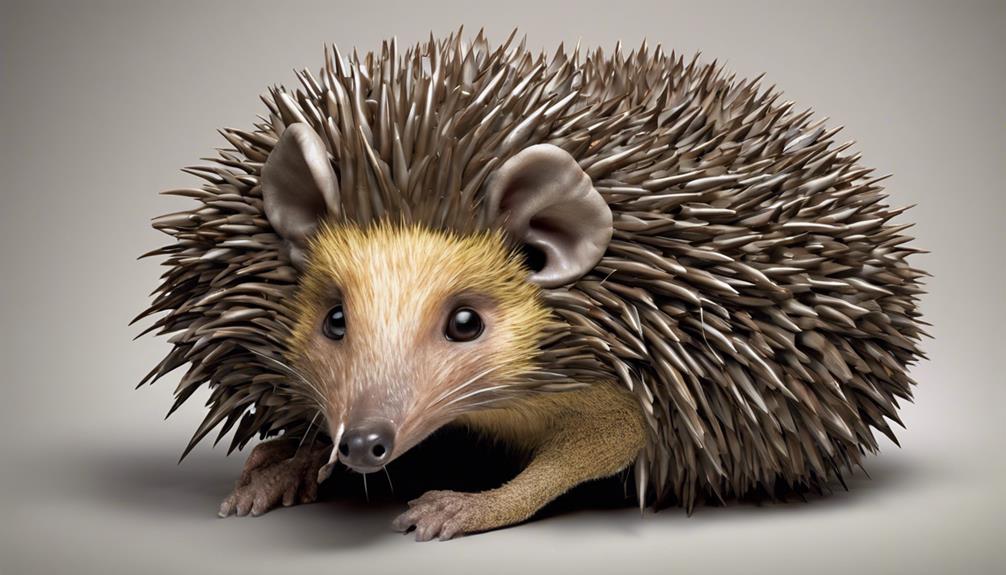
Sporting a spiky exterior and native to Madagascar, the Large-Eared Tenrec thrives in its rainforest habitat while facing the challenge of habitat loss. This unique creature, belonging to the Tenrecidae family, relies on insects, especially termites, as its primary food source. Covered in quills that detach easily for defense, the Large-Eared Tenrec uses its snout adeptly for digging up insects from the forest floor.
However, the very habitat that sustains this fascinating species is under threat due to habitat loss. Conservation efforts are crucial to safeguard not only the Large-Eared Tenrec but also the delicate balance of the rainforest ecosystem it calls home. By understanding the importance of preserving this habitat, we can guarantee the continued existence of these spiky creatures in the wild.
Solenodon: The Caribbean Hedgehog Doppelganger
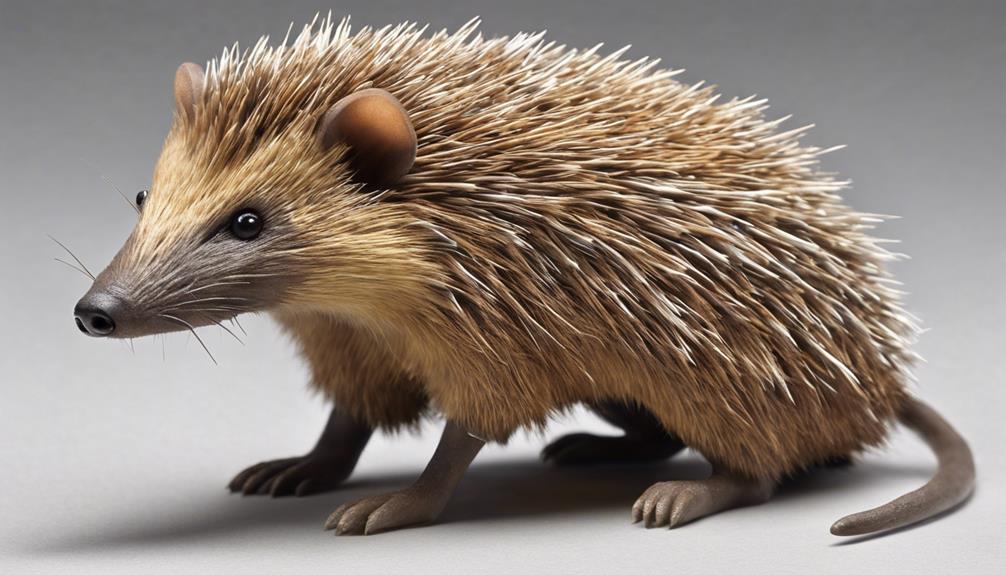
The Solenodon, a fascinating nocturnal mammal native to Cuba and the Dominican Republic, closely resembles a Caribbean hedgehog. These unique creatures have poor eyesight but make up for it with their keen sense of smell.
Solenodons primarily feed on insects, using their long, snake-like snout to detect prey efficiently in the dark. One of the most intriguing features of solenodons is their toxic saliva, which aids in hunting by paralyzing small animals. This adaptation sets them apart from other mammals and showcases their specialized evolution for survival in their specific habitats.
As a nocturnal species, solenodons are most active during the night, utilizing their sharp senses to navigate and hunt in the darkness. Studying these remarkable animals provides valuable insights into the diverse adaptations that have evolved in the animal kingdom.
Echidna: The Egg-Laying Hedgehog Impersonator
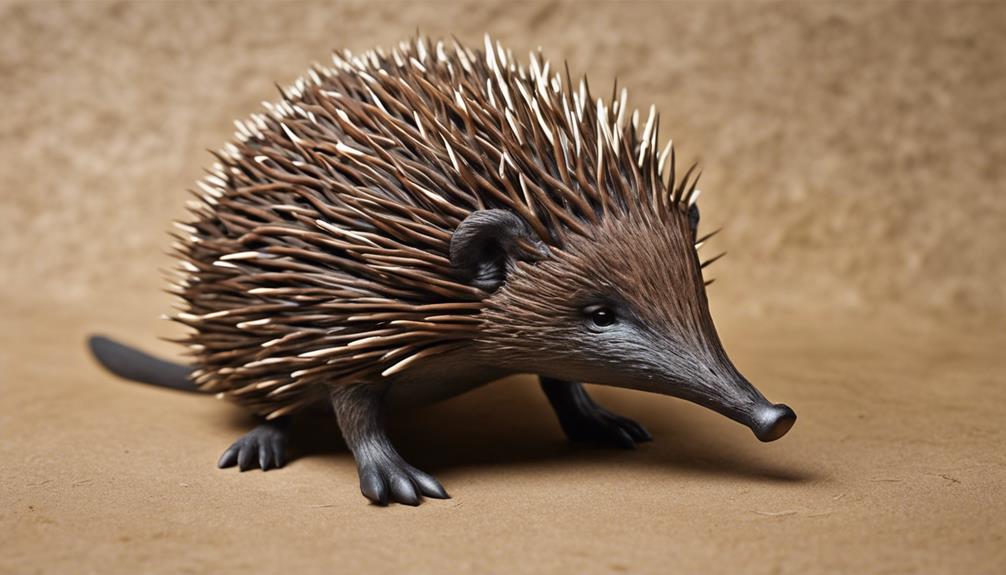
An intriguing fact about the Echidna is its unique ability to lay eggs, setting it apart from traditional hedgehogs. Echidnas, also known as spiny mammals, have some fascinating features that make them stand out in the animal kingdom:
- Egg-Laying Marvel: Unlike most mammals, echidnas are monotremes, which means they lay eggs instead of giving birth to live young. This reproductive strategy is a rare and remarkable trait among mammals.
- Specialized Diet: Echidnas use their sticky tongue to feast on ants and termites, making them valuable for controlling insect populations in their habitats. This unique feeding behavior showcases their adaptation for survival.
- Unique Habitat: Echidnas can be found in various landscapes across Australia and New Guinea. Their ability to thrive in diverse environments highlights their resilience and adaptability as a species.
Echidnas are truly intriguing creatures, with their egg-laying ability, specialized diet, and wide distribution making them a captivating subject for those interested in the wonders of the natural world.
Golden Moles: The Underground Hedgehog Twins
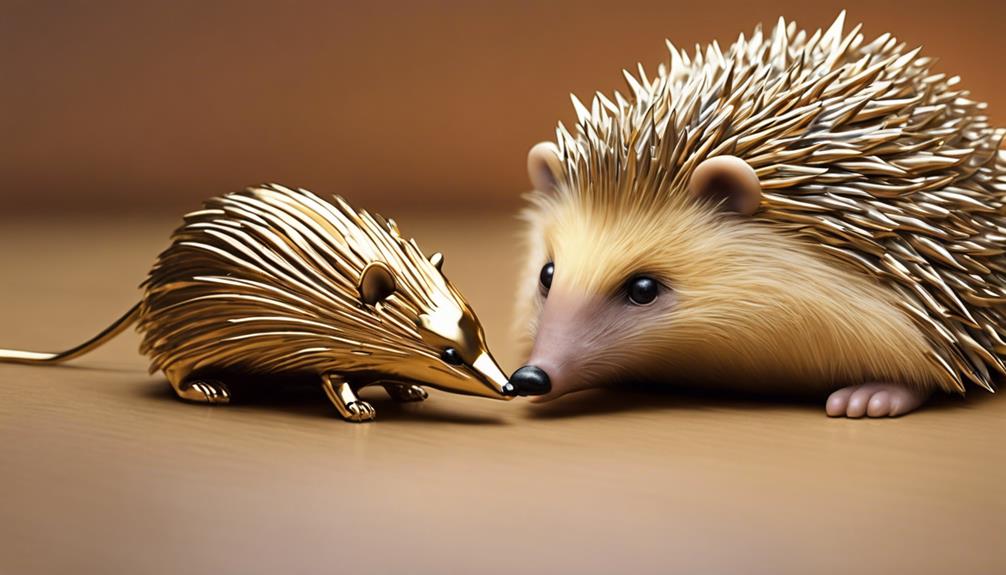
As I explore the domain of burrowing mammals, the golden moles emerge as intriguing creatures akin to hedgehogs in their underground lifestyle. Found in southern Africa, these golden moles, like their above-ground hedgehog relatives, are skilled burrowers.
These solitary mammals rely on underground insects for their sustenance, showcasing their specialized digging abilities to create protective burrows in the earth. Their ecological niche mirrors that of hedgehogs, with both species thriving in their respective habitats through unique adaptations and behaviors.
The golden moles' subterranean existence is a demonstration of their remarkable survival strategies, much like the hedgehogs above ground. By delving into the world beneath our feet, we uncover these fascinating parallels between the golden moles and hedgehogs, shedding light on the diverse ways in which animals have evolved to conquer different environments.
Frequently Asked Questions
What Animals Are Similar to a Hedgehog?
When I consider animals resembling hedgehogs, moonrats in Southeast Asia, large-eared tenrecs in Madagascar, solenodons in Cuba and the Dominican Republic, echidnas in Australia and New Guinea, and golden moles in southern Africa come to mind.
What Are the Little Animals That Look Like Hedgehogs?
Little animals that resemble hedgehogs are tenrecs. Found in Madagascar, these creatures have spines for defense. They belong to the Tenrecidae family and exhibit unique adaptations, like echolocation and spines for communication.
What Animal Looks Like a Large Hedgehog?
When I think about an animal resembling a large hedgehog, the Large-Eared Tenrec from Madagascar comes to mind. It has unique adaptations for its rainforest habitat, like detachable quills for defense and a diet of insects.
What Pet Looks Like a Hedgehog?
Ever wondered what pet resembles a hedgehog? African Pygmy Hedgehogs are enchanting creatures that make unique companions. Their quills and quirky personalities bring joy and charm into any home. Care for them with love and devotion.
Conclusion
To wrap up, these five animals bear striking resemblances to hedgehogs. From the moonrat's spiky appearance to the tenrec's large ears, each creature shares similarities with the beloved hedgehog.
The solenodon, echidna, and golden moles also exhibit hedgehog-like features, making them fascinating creatures to learn about and observe in the wild.
Next time you come across one of these animals, remember their hedgehog doppelgangers and appreciate the intricate beauty of the animal kingdom.
